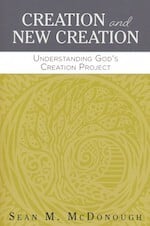Reading the Bible on Its Own Terms
Daily Reflection / Produced by The High Calling
The LORD gave a message to Jeremiah after Nebuzaradan, the captain of the guard, had released him at Ramah. He had found Jeremiah bound in chains among all the other captives of Jerusalem and Judah who were being sent to exile in Babylon.
Jeremiah 40:1
The opening verses of Jeremiah can be unsettling if you have been reading this book in order. In chapter 39, King Nebuchadnezzar gave instructions for Jeremiah to be set free from prison. Jeremiah, we are told, remained in Judah with his own people (39:11-14). But in Jeremiah 40, we learn that Jeremiah had been bound in chains along with the other exiles who were being sent to Babylon (40:1). At first glance, it seems as if Jeremiah 39 and Jeremiah 40 are at odds.
People who regard the Bible negatively are quick to point to these chapters as an example of contradictions in Scripture. But they misunderstand the way the biblical narratives often function, especially in Jeremiah. Throughout the book, we have often read passages that are out of order chronologically. They have been gathered thematically in order to illustrate certain theological points. This is no way discredits the editor(s) who gathered the prophecies of Jeremiah and wove them together into one book, unless you assume that the editor(s) should have put everything in chronological order. But this assumption fails to take the Bible on its own terms. It projects onto Scripture what we insist to matter most, rather than what the text and its authors prioritized.
In fact, there are many ways to harmonize the accounts of Jeremiah 39 and 40, if one chooses to read the Bible fairly on its own terms, recognizing the fact that the narrative of Jeremiah is not always chronological, and that the historical accounts embedded in this book are very concise, lacking details that we might wish were present.
I am focusing on the importance of faithful biblical interpretation today for two reasons. First, I want to prepare you for times when you hear people insist that the Bible is full of contradictions. To be sure, there are passages that are difficult to interpret, especially in comparison with related texts. But so-called contradictions in Scripture are much more accurately and fairly seen as differences in perspective the reflect the particular concerns of the biblical authors. (I explain this much more thoroughly as it related to the biblical Gospels in my book, Can We Trust the Gospels?)
Second, I want to encourage you in your own study of the Bible to learn to take it on its own terms. If you really want to understand the biblical text, you must pay attention to the genre of the literature, the historical context of its writing, and the particularity of its literary approach. Reading the Bible in this way will strengthen your understanding and augment your appreciation of God’s written Word.
QUESTIONS FOR REFLECTION: When have you heard people say the Bible is full of contradictions? How might you respond to them? How might you respond to your own doubts about difficult passages?
PRAYER: Lord, as you know, we sometimes struggle to understand your Word. Some passages, like those in Jeremiah 39 and 40, seem to be contradictory, which perplexes us and sometimes makes us doubt the truthfulness of Scripture.
So help us to read the Bible on its on terms, or, really, on your terms. You have chosen to communicate with us through writings that have a particular historical and literary context. Thus, if we’re to understand what you want to say to us today, we need to grasp this context. Help us to do so.
Thank you for able, faithful commentators who have done so much of this homework for us. And thank you for pastors and teachers who work hard on biblical interpretation so that they might pass on your truth.
Help those of us who seek to makes sense of your Word to do so faithfully, humbly, and correctly. Amen.






